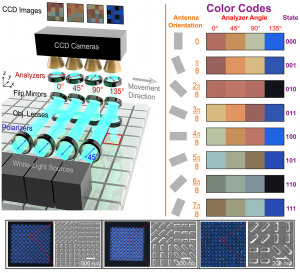Subscriber Benefit
As a subscriber you can listen to articles at work, in the car, or while you work out. Subscribe NowIf a team of Purdue University researchers has its way, you can say so long to the dots and dashes of Morse code.

The Purdue team has created technology aimed at replacing the complicated code with colored digital characters to modernize optical storage.
Purdue researchers are confident the advancement will help with the explosion of remote data storage during and after the pandemic.
Morse code, which has been around since the 1830s, is commonly used today in aviation and aeronautical fields because radio navigational aids still identify in Morse code. The U.S. Navy and Coast Guard still use signal lamps to communicate via Morse Code.
But the uses of Morse code are much broader than most would think and can even be found in technology in most homes.
The familiar dots-and-dashes system may seem antiquated given the amount of information needed to be acquired, digitally archived and rapidly accessed every day. But those same basic dots and dashes are still used in many optical media—including CDs, DVDs and Blu-Ray discs—to aid in storage.
A new nanomirrors technology developed at Purdue is aimed at modernizing the optical digital storage technology. Optical storage is an electronic storage medium that uses low-power laser beams to record and retrieve digital data
The advancement developed at Purdue allows more data to be stored and for that data to be read faster.
Rather than using the traditional dots and dashes, the Purdue innovators encode information in the angular position of tiny antennas, allowing them to store more data per unit area.
“The storage capacity greatly increases because it is only defined by the resolution of the sensor by which you can determine the angular positions of antennas,” said Alexander Kildishev, Purdue associate professor of electrical and computer engineering. “We map the antenna angles into colors, and the colors are decoded.”
The majority of CDs, DVDs and Blu-Ray discs are stamped and not recordable. That class of optical media is an essential part of disposable cold storage “with a rapid access rate, long-lasting shelf life and excellent archival capabilities,” Kildishev explained.
The making of a Blu-Ray disc is based on the pressing process, where the silicon stamper replicates the same dot-and-dashes format the final disc is getting. A thin nickel coating is then added to get a negative stamp.
“Our metasurface-based optical storage is just like that,” said Di Wang, a former Purdue doctoral student who fabricated the prototype structure. “Whereas in our demo prototype, the information is burnt in by electron-beam lithography, it could be replicated by a more scalable manufacturing process in the final product.”
This new development not only allows for more information to be stored but also increases the readout rate.
“You can put four sensors nearby, and each sensor would read its own polarization of light,” Kildishev said. “This helps increase the speed of readout of information compared to the use of a single sensor with dots and dashes.”
Future applications for the technology include security tagging and cryptography, he added.
Kildishev and his team are working with the Purdue Research Foundation Office of Technology Commercialization to patent and license their technologies.
The Purdue team is looking to partner with interested parties in the industry to continue developing these capabilities.
Please enable JavaScript to view this content.
